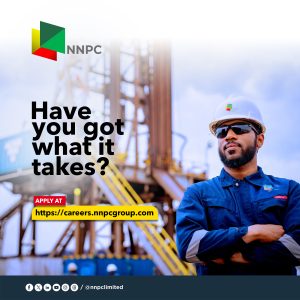By Adewole Kehinde
Like a regular nightmare, the fuel scarcity saga comes down on residents of the FCT again from nowhere.
Recently, the Group Managing Director of the Nigeria National Petroleum Company (NNPC) Ltd, Mele Kyari, said that the only way to tackle the rising price of diesel and cooking gas in Nigeria is to increase the production of crude oil in the country.
Kyari said this when he appeared before the House of Representative Committee on Petroleum (Downstream), headed by Hon. Abdullahi Gaya, over the rising cost of the products.
Kyari, who rued acts of vandalism at oil facilities, which he said were responsible for the decline in production.
He said there was a massive attack on one of their facilities and that 27, 000 barrels were lost overnight.
He also attributed the problem to the non-functioning refineries in the country.
Kyari said besides the fact that the Russia-Ukraine war was affecting the supply of products across the world, most major oil companies were also shutting down due to the energy transition to eliminate fossil fuels.
He said the unavailability of foreign exchange (FX) as a result of inadequate exports, was another reason for the problem.

He said interventions were in place to ensure production improved in July to address some of the FX challenges.
Kyari also cautioned against suggestions that subsidies should be made available for diesel.
He further said, “Today we have over 205 illegal refinery sites. There are over 295 insertions on our crude oil production line. We have over 200 illegal connections on our oil pipelines. Companies shut down because there is no further need to produce, and that is what we are doing. There is massive intervention happening, and we believe that we can restore production through the intervention that we are doing.
“Therefore, there is a supply gap and one of the reasons, and we are proud to say that it is a good reason, is that we took down many of these illegal refineries. I can tell you, potentially, that the AGO you use may be coming from illegal refineries, and we took a significant number of them down, which is why you are seeing the supply challenge.
“I don’t think we should regret this. We should have zero from the illegal refineries than to have them at all because it is a national disaster and we are poised to ensure that we take them down.
“But, to do so, you must bring in supply, which is why the NNPC is intervening sparingly, just enough to fill the gap created by the other marketers but not enough to provide 100 per cent of supply into the country.
No administration will ever succeed without stopping petroleum importation and removing petroleum subsidies. However, the removal of the subsidy must be under certain conditions and through a certain gradual process. These conditions include sufficient local refineries, exchange rate stability, and single-digit inflation.
The steps for removing the subsidy include petroleum consumption auditing to ascertain and track petroleum consumption. The next step is the petroleum consumption reduction programme, which aims to reduce the daily litre consumption in Nigeria from 70 million to about 30 million litres. This is possible by targeting large consumption cities like Abuja, Lagos, and Kano.
The programme will require investment in mass transport systems, which include convenient public trains, light rail transit, and buses in these cities. The idea is to impose car taxes to discourage people from using their cars and incentivize them to use public transport systems. This will reduce the energy per capita consumption in these cities and encourage the use of alternative fuels like compressed natural gas (CNG) and liquefied petroleum gas (LPG), in these mass transport facilities.
The programme could be extended to other major cities gradually.
Imagine a scenario of 10 people going to the same office daily, using 10 different vehicles at the same time, and consuming the same quantity of fuel each. If coming and going to the office consumes five litres daily, it will mean five litres multiplied by 10 people, which is 50 litres of petrol daily. But when they all use one vehicle, the energy consumption will be only five litres daily, which means petroleum consumption, is reduced by 90%.
The payment of subsidies for these people will be reduced by 90%. That is the energy conservation process of removing the petroleum subsidy.
But the public transport systems must be in place first. The private sector could be mobilised for such investments. Then, the next step will be the implementation of the targeted subsidy.
The subsidy issue has been and will continue to be an issue and a great burden on the government. After fixing the current petroleum scarcity, the government must come up with a strategic roadmap for addressing the subsidy issues.
The expectation now is that full deregulation of the downstream sector (with the implication of high fuel prices) could guarantee fuel availability and free the funds hitherto used in subsidy payment for other development.
Adewole Kehinde is the Publisher of Swift Reporters and can be reached via 08166240846, 08123608662, kennyadewole@gmail.com

